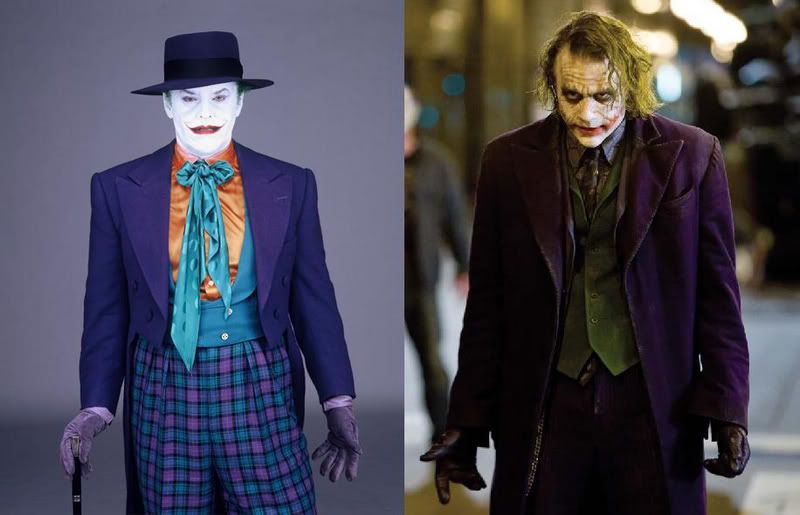What makes a great villain great is a little something that sets him aside from everything else in the story.
One of my all-time favorite villains is the gunfighter Wilson played by Jack Palance in
Shane, the role that really made Palance's movie career. Recently saw a TV special on villains in which director John Carpenter spotlighted the role of Wilson as a great villain. Carpenter remarked that Wilson was so tough that "even the dog gets out of his way." Which is true--in scenes in
Shane when Wilson comes into the bar or gets up from where he was sitting, there's a big hound in the bar that gets up and leaves every time! Even the dog knew not to mess with Wilson!

Another thing about Wilson as portrayed by Palance: with the exception of when Shane buys a soda pop for the kid, everytime anyone gets a drink in the bar is whiskey or beer--usually whiskey. The one constant exception is Palance's Wilson, who always drinks coffee!!! A small but--to me, anyway--important difference. What's the thing with coffee? I keep wondering.
Of course, what really sets Wilson apart is his coldblooded cruelty. The scene where he hogs the woodens sidewalk, forcing Elisha Cook's "Stonewall" into the muddy, slippery street, picks a fight with him, beats him to the draw, and stands grinning over him before pulling the trigger. That scene really had movie-goers talking back then.
It's interesting that in citing cowboy villains, that program listed Palance's Wilson, Lee Van Cleeve's Angel Eyes in the Good, the Bad, and the Ugly, Eastwood's Bill Mony from Unforgiven, Scott Glenn's Wes Hightower in Urban Cowboy, and Roy Barcroft who played heavies vs. Roy Rogers, Gene Autry, Bill Elliott, and other B-Western cowboy heroes.
Among the gangster villains, the film cite Paul Muni in the original
Scarface, which alluded to Al Capone's career and was Al Capone's favorite film, although banned in some cities (including I think Chicago) for some years. Cagney's Tom Powers in
Public Enemy, which made him a star, was based on Jewish gagser Hymie Weis who once smashed a omlet in a girlfriend's face. The program also mentioned movie star George Raph once worked for gangster Owney Madden, but didn't mention it was primarily as an entertainer--a dancer--in one of Madden's nightclubs, with a possible sideline as a bagman. Raft was tough enough to be a childhood friend of "Bugsy" Siegal however, and palled around with Siegal and even got him a screen test when Siegel went Hollywood.
The program cited Josephman Wiseman as the first of the "super villians" in the title role of
Dr. No, the first James Bond film. Didn't even mention Wiseman's great definitive role as the nutsy crook, high on drugs, who turns cop-killer in
Detective Story. That was the best portrayal of a gangster ever.
Best of show for psycho characers, according to the program, were Robert Mitchum in both
Night of the Hunter and the original
Cape Fear (he certainly gets my vote!), Joseph Cotton in
Shadow of a Doubt (a serial killer of women who loves his sister and her family who he visits); Robert Walker in
Strangers on a Train; Martin Landau as James Mason's henchman in
North by Northwest (who by injecting the hint of homosexual undertones in his performance forced Mason to have to change his character), and of course Tony Perkins as Norman Bates in the original
Psycho, which, John Carpenter said "made Perkins' career and destroyed it." Both Norman Bates and Leatherface in
Texas Chainsaw Massacre were based on the real-life mass murderer.
The program also referred to space villains in "Cold War parables" like the 1951 original
The Thing and the 1960 original
Village of the Damned. Carpenter said his later remake of
The Thing was based on "lack of trust" among people.













